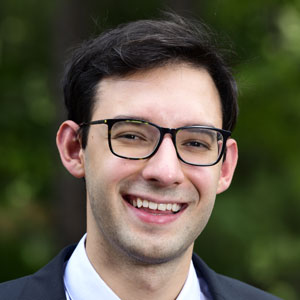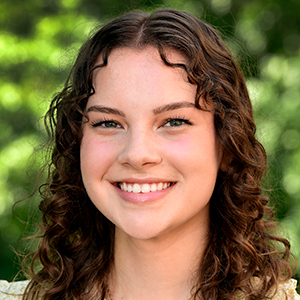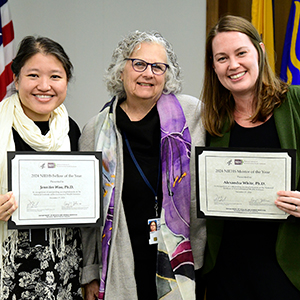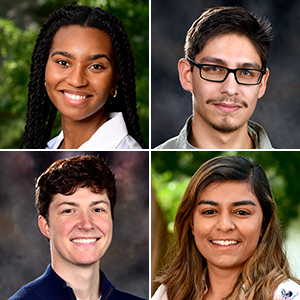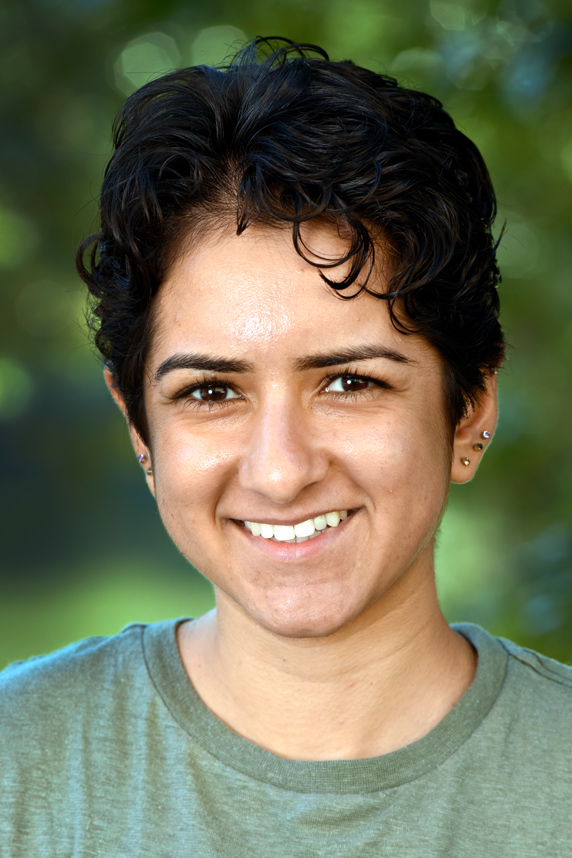 Mehta advises other fellows in postbac programs to trust the process and believe in themselves because perseverance pays off. (Photo courtesy of Steve McCaw / NIEHS)
Mehta advises other fellows in postbac programs to trust the process and believe in themselves because perseverance pays off. (Photo courtesy of Steve McCaw / NIEHS)A potential therapy for pulmonary fibrosis, a lung scarring disease, is on the horizon thanks in part to Sanya Mehta, a 2019 recipient of a Postbaccalaureate Intramural Research Training Award at NIEHS. Theoretically, the therapy will work by shifting the balance toward useful bacteria and away from harmful bacteria in lungs.
To explain research behind this development, Mehta created a two-minute video, “Treating Lung Scarring with a Bacterial Weed Whacker,” which was posted to SciBites in June (see sidebar). That is an award-winning video series, sponsored by the National Institutes of Health, in which researchers briefly explain their work in a way that is easy to understand.
“Science isn't complete until the results have been shared with others,” states the Scibites webpage. “Talking about those results is one of the important ways of making them public.”
Growing interest in science communication
Mehta’s venture into science communication began with preparing a three-minute talk for the institute’s 3rd Annual Postbac Communication Challenge, May 2020, on the same topic as her video.
“When still working from home because of the pandemic, I entered the communications challenge and developed the analogy of a weed whacker to describe how lung bacteria behave in our research,” said Mehta. “Winning first prize for the talk was a turning point.”
She said the task of explaining her research jargon-free helped her better understand what the lab where she worked wanted to accomplish. It also sparked an interest in science communication, leading Mehta to become a contributing author for this newsletter, the Environmental Factor.
 Garantziotis also directs the NIEHS Clinical Research Unit and holds a secondary appointment in the Clinical Research Branch. (Photo courtesy of Steve McCaw / NIEHS)
Garantziotis also directs the NIEHS Clinical Research Unit and holds a secondary appointment in the Clinical Research Branch. (Photo courtesy of Steve McCaw / NIEHS)Learning how to learn
As part of the Matrix Biology Group, led by Stavros Garantziotis, M.D., and under the mentorship of Yosuke Sakamachi, Ph.D., Mehta quickly realized she was expected to think critically about her research.
“I found the process to pick up lab techniques and understand the research took several months, and the pandemic started when I began to settle in,” said Mehta. “Luckily, I had a wonderful day-to-day mentor in the lab who kept a close eye as he also let me figure things out on my own. When we individually returned to the lab last summer, we did Zoom meetings to talk through experiments.”
Although trying to conduct lab work under conditions set by the pandemic response was challenging, Mehta found a silver lining.
“We did journal clubs and other professional development activities, which you normally don’t have time for along with lab work,” said Mehta. “I was also able to devote more time to making a poster explaining the research that I might not have done otherwise.”
“I’ve absolutely had a great experience at NIEHS,” she added.
Deciding what comes next
“I was eyeing grad school but didn’t really know what a scientific research career could be like,” said Mehta. “Being at NIEHS solidified my choice to attend a doctoral program.”
This month, she will start earning a degree from the St. Jude Children’s Research Hospital Graduate School of Biomedical Sciences, where many faculty work in her fields of interest, with dedicated lab rotations.
“Sanya is a star,” said Garantziotis. “We’re sorry to see her leave, although we are glad that she has been so successful.”
Her interests lean toward translational research in cancer immunotherapy. The root of this interest lies in her having two close friends who are childhood or young adult cancer survivors.
“I want to follow in the footsteps of people who worked really hard in labs to make cancer and other therapeutics possible,” said Mehta.
And she wants to continue finding ways to communicate her work to others for the benefit of all.
(Carol Kelly is the managing editor for the NIEHS Office of Communications and Public Liaison.)





